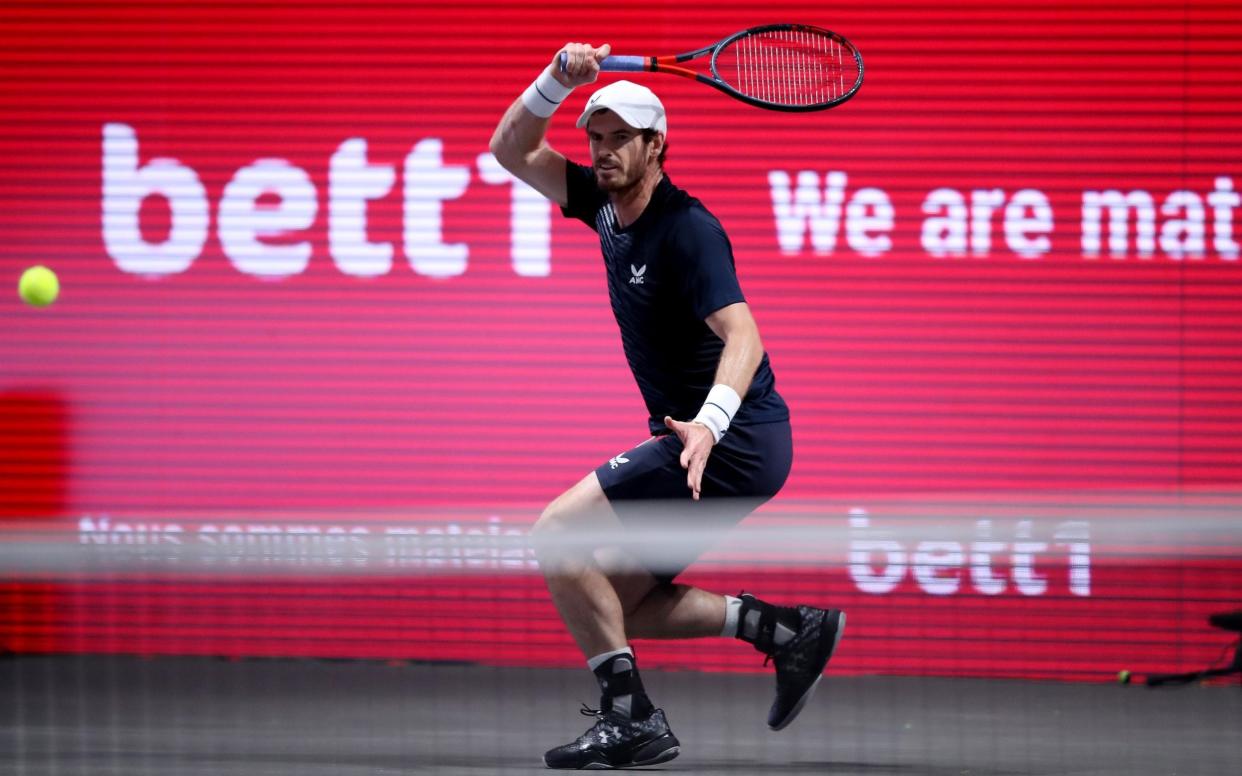Andy Murray forced to pull out of Cologne ATP tournament with ongoing hip flexor problem

This disrupted tennis season is not getting any better for Andy Murray, who has withdrawn from this week’s ATP event in Cologne because of tendinitis in his left psoas – a body part more often referred to as the hip flexor.
The latest in a series of frustrating setbacks, Murray’s new injury afflicts the opposite side to the hip he underwent surgery on at the start of last year. But the evidence of the past 18 months underlines the challenge of playing elite tennis with a metal implant, especially when – as Murray explained last week – “it changes the way your pelvis moves".
Murray first reported this tendinitis issue a couple of days ahead of last month’s French Open, saying that he had been carrying it since the US Open a month before that.
On Sunday, in a video posted on his Facebook page, he added: "I've been trying to deal with it in training and the matches. Unfortunately after my match here this week it's flared up again. After playing some points today, I decided that it was not going to be good enough to play."
It seems ironic that Tuesday is the first anniversary of what could potentially be the last flourish of Murray’s storied career: his 46th ATP title in Antwerp. All that week, Murray was in the lightest and brightest of moods. "I need to now start talking more about my future,” he said, after beating Stan Wawrinka in the final, “and I am certainly a lot more optimistic now.”
Had Murray had any idea how 2020 would turn out, he might have struck a more cautious note. The malaise really began at the very end of 2019, when he experienced soreness in the right hip caused by bone deposits forming around the unfamiliar metal implants.
Murray was unable to recover fitness before the suspension of elite tennis in early March. And although he made a promising start in New York on the resumption in mid-August, beating Frances Tiafoe and world No7 Alexander Zverev back to back, he has lost four of five matches since – all of them, uncharacteristically, in straight sets.
The left hip has been an issue since Murray flew home from the US Open, where he crept through a first-round meeting with Japan's Yoshihito Nishioka in five sets before being crushed in the second round by rising Canadian star Felix Auger-Aliassime. He was already suffering from tendinitis then, but was unable to get it checked out for a few days after arriving in Surrey because of Covid-19 protocols and the slow return of a swab test.
Murray’s season is not necessarily over. While his management said that he would probably have to abandon plans to play in Vienna in a week’s time, he has not yet given up on the Paris Masters – the final event of the regular calendar – which begins in a fortnight.
Having said that, however, there must be a case for putting specific tennis training away for the next couple of months while Murray concentrates on dealing with this latest niggle.
With the benefit of hindsight, we can probably now say that his below-par performances against Stan Wawrinka at the French Open and Fernando Verdasco last week were both influenced by the fact that he wasn’t fully fit.
This reading of events does at least have one encouraging corollary. If Murray can somehow shrug off the series of ailments that have afflicted him in 2020, it is possible that we might see him recapture his level from Antwerp last year. The all-conquering form of 2016 is probably too much to hope for.


